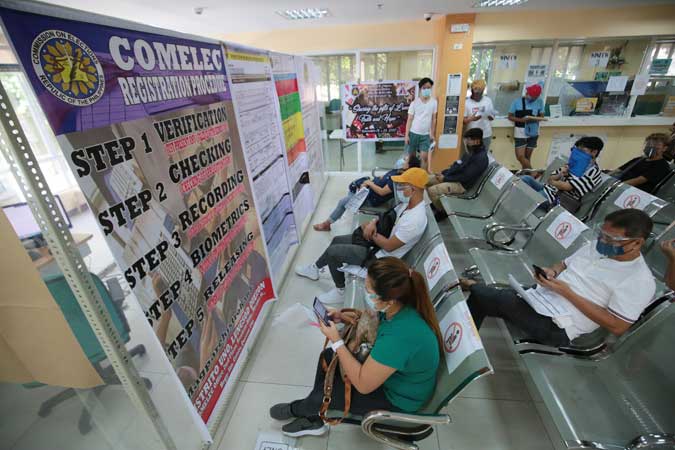Voters’ registration for the 2022 elections is ongoing until Sept. 30. — PHILIPPINE STAR/ MICHAEL VARCAS
THE PHILIPPINE ECONOMY may face risks to its outlook due to the upcoming 2022 elections and “pandemic fatigue,” Fitch Solutions Country Risk & Industry Research said.
“We flag risks to political stability not only due to the pandemic, but also as countries face major elections over the coming years,” Fitch Solutions Head of Asia Country Risk Anwita Basu said in a webinar.
Ms. Basu noted there may be heightened “political risks” arising from the upcoming elections in the Philippines, as well as South Korea, Australia and Japan.
The Philippines is scheduled to hold national elections on May 9, 2022. President Rodrigo R. Duterte is set to step down from office on June 30, 2022, although he has hinted at the possibility of running for vice-president.
Also, Ms. Basu said the significant rise in income inequality in the Asia-Pacific region due to the pandemic poses downside risks to stability.
“Moreover, as governments have taken on more authoritarian stances to curb the viral outbreak, anti-establishment sentiment is likely to be on the rise,” she said.
Ms. Basu said Myanmar is a “sad reminder” of how sentiment can turn against an authoritarian state and may pose a threat to the economy.
In May, Fitch Solutions lowered its growth forecast for the Philippines to 5.3% from an earlier estimate of 5.8%. This is also below the 6-7% target of the government for the year after the record 9.6% contraction in 2020.
The delay in coronavirus disease 2019 (COVID-19) vaccine shipments to the region has also affected the growth outlook.
“This has resulted in delays to vaccination programs for countries worldwide that are reliant on the COVAX scheme for vaccine supply. This will impact emerging markets including Vietnam, Cambodia, Laos, Myanmar, Bangladesh, Sri Lanka, Indonesia, Philippines, and Malaysia,” Ms. Basu said.
The government has administered 11.71 million doses of coronavirus vaccines from March 1 to July 4, of which 8.84 million were first doses. So far, 2.869 million Filipinos or less than 3% of the population have been fully vaccinated.
The government targets to vaccinate 500,000 people daily in Metro Manila, Rizal, Bulacan, Cavite, Laguna, Metro Cebu and Metro Davao to achieve herd immunity in these high-risk areas by end-November. — L.W.T.Noble

